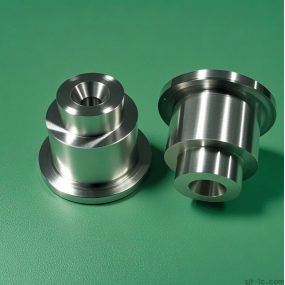In the stamping process of precision stamping parts, sometimes cracks or ruptures may appear, leading to the scrapping of the stamped parts. The main reason for the occurrence is that some of the tensile stresses exceeded the strength of the sheet metal. There are many reasons for the cracking of stamped parts, and in the process of solving it, the cracking area should be carefully inspected. Based on the detailed situation, the cause of the rupture should be inferred, and then a detailed plan for solving the rupture problem should be formulated to prevent the stamping part from rupturing.
1. Reasons for the occurrence of deep drawing cracks and rupture defects
(1) The stamping function of the material does not meet the process requirements. Different raw materials of sheet metal have different elongation and tensile strength. When the selected sheet metal does not meet the deep drawing requirements, the sheet metal will be torn during the stamping process.
(2) The thickness of the sheet metal exceeds the tolerance. The thickness of the sheet metal exceeds the tolerance, and the gaps in the sheet metal become smaller during the deep drawing process. The compressive stress on the sheet metal increases, making deep drawing difficult. The sheet metal is not easy to move and may be pulled apart.
(3) The surface quality of the sheet metal is poor, with scratches, rust, and impurities. Scratches on the surface of the sheet metal can easily cause stress concentration during the deep drawing process, while rust and impurities on the surface will add resistance to the sheet metal forming process.  (4) did not apply lubricant according to the process requirements.
(4) did not apply lubricant according to the process requirements.
(5) The feeding resistance on the pressing surface is too high. A large rough appearance, small gaps between the pressing ribs, small corner radius of the concave die, excessively high drawing ribs, and poor surface smoothness of the pressing surface and drawing ribs can all lead to increased resistance to the movement of the sheet metal, resulting in breakage.
(6) The orientation of the sheet metal positioning is incorrect. During the production operation process, the orientation of the sheet metal is off center, resulting in excessive and insufficient pressing on one side. The excessive pressing on the other side leads to high stress and difficulty in feeding, resulting in cracking.
(7) Improper installation of the mold or poor accuracy of the press machine can result in uneven edge pressing force, with some parts having excessive edge pressing force, leading to the breakage of the sheet metal.
(8) The partial deep drawing amount is too large, and the deep drawing deformation exceeds the sheet metal deformation.
2. Preventive measures for cracks and ruptures in precision stamping parts
(1) Select suitable sheet metal during the planning and development phase to meet the requirements of deep forming function in Dala.
(2) During the production process, inspect the surface quality of the sheet metal for rust and impurities.
(3) Regularly inspect and maintain stamping molds, polish the surface of the mold, and make the mold surface rough.
(4) Standardize the production process and strictly adhere to the oil coating requirements.
(5) Regularly inspect and maintain the accuracy of stamping equipment.
This article is from EMAR Mold Co., Ltd. For more EMAR related information, please click on www.sjt-ic.com,


 Spanish
Spanish Arabic
Arabic French
French Portuguese
Portuguese Belarusian
Belarusian Japanese
Japanese Russian
Russian Malay
Malay Icelandic
Icelandic Bulgarian
Bulgarian Azerbaijani
Azerbaijani Estonian
Estonian Irish
Irish Polish
Polish Persian
Persian Boolean
Boolean Danish
Danish German
German Filipino
Filipino Finnish
Finnish Korean
Korean Dutch
Dutch Galician
Galician Catalan
Catalan Czech
Czech Croatian
Croatian Latin
Latin Latvian
Latvian Romanian
Romanian Maltese
Maltese Macedonian
Macedonian Norwegian
Norwegian Swedish
Swedish Serbian
Serbian Slovak
Slovak Slovenian
Slovenian Swahili
Swahili Thai
Thai Turkish
Turkish Welsh
Welsh Urdu
Urdu Ukrainian
Ukrainian Greek
Greek Hungarian
Hungarian Italian
Italian Yiddish
Yiddish Indonesian
Indonesian Vietnamese
Vietnamese Haitian Creole
Haitian Creole Spanish Basque
Spanish Basque











